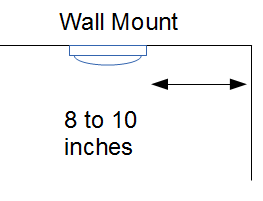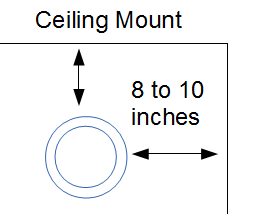Death by Fire
Thousands of Americans die every year in residential fires. Most of these deaths are not from heat of flames but from inhaling smoke and toxic fumes. Smoke is actually the particles of combustion generated by what is burning – paper, wood, chemicals, plastic, upholstery or other fuels.
Buying Time
When a smoke detector senses smoke, an alarm automatically sounds. Most fatal home fires occur between 8:00pm and 8:00am. Fires often generate lethal amounts of unseen smoke and fumes well before flames are visible and before heat makes residents feel uncomfortably warm.
As a result, many people who die in home fires are asleep and never wake up. When carefully purchased, installed and maintained smoke detectors can prevent such needless deaths. Smoke detectors buy time to get out of the house fast – before toxic fumes accumulate to lethal levels.
Purchasing
Quality, not price, should be the determining factor when buying smoke detectors. Check for the following:
- Laboratory label, insuring that samples of the model you are buying have been carefully tested
- Alarm loud enough to awaken the family through closed bedroom doors
- Malfunction signal – to warn you when batteries are weak or dead
- Manufacturer’s warranty of at least 5 years
- Ease in maintenance and cleaning
Ionization – Contains a small amount of radioactivity that conducts electricity. Electric current flows continuously between two electrodes in the chamber. When smoke particles enter, they disturb the flow, causing the alarm to go off.
Photoelectric – Contains a beam of light and a photocell within the chamber. When smoke enters, it deflects the beam, causing it to strike the photocell and set off the alarm.
 Which is better?
Which is better?
Ionization detectors are more sensitive to the tiny particles of combustion that can’t be seen or smelled – those emitted by flaming fires. Photoelectric detectors are more sensitive to the large particles of combustion emitted by smoldering fires.
The differences between the two types are generally not critical, since the difference in response time is only a matter of seconds. Since most home fires produce a rich mixture of smoke types, with detectable amounts of both large small particle smoke early in the fire’s growth, either type will meet most needs.
Placement
- Buy as many smoke detectors as it takes to give your home complete coverage
- Your chances for survival increase with each detector you have, but one on each level of the house is the absolute minimum
- You should have a smoke detector in each bedroom, in the hallway close to each sleeping area and in heavily-occupied areas like the living room
- When bedroom doors are left open, you should have at least one detector in the hallway outside the bedroom area

 Installation
Installation
- Follow the manufacturer’s installation instructions
- Ceilings – mount the device away from corners and walls, which have dead air space nearby (about 8 to 10 inches is recommended distance)
- Walls – install the detectors high because smoke rises (8 to 10 inches away from corners and ceiling)
- Install smoke detectors at least 3 feet from vents, which might recirculate the smoke
- Never place smoke detectors on uninsulated walls or ceilings – extreme temperatures can ruin batteries and prevent smoke from reaching the detectors






